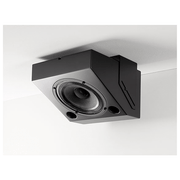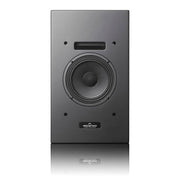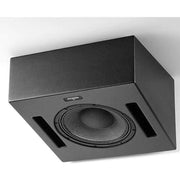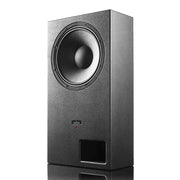When it comes to speakers, the variety is extensive for the vast variety of uses, power and intended environments for the use of them. On top if this speakers, come as active and passive, So what does that mean?
An active speaker is a self-amplified and powered speaker requiring AC power to one or both speakers. A passive speaker is a speaker that requires amplification from an amplifier. So simply put, Active speakers require a source and amplifier is not necessary where passive requires and amplifier with a source incorporated or attached to it.
Benefits of Active Speakers
Active speakers provide an excellent solution with a low foot print in terms of area required. They often incorporate many features that a passive cannot, most important being the fact no amplifier is required. They most commonly include a good variety of inputs, Bluetooth, ethernet wireless and typical audio both analog and digital. These allow them to be pretty much put anywhere and attached to any source of music or media. On top of this they also can provide an active crossover, this can allow you to manipulate and augment the audio to the desired sound. With this in mind, it also benefits the fact the driver and amplifier are designed to work synergistically, meaning they are made to work together and be driven to full capacity without the chance of damaging the unit or affecting the audio output.

Ascendo 6.5" Coax Passive Monitor Wedge - Black (Single)

Ascendo The6 Passive On-Wall Immersive Audio Speaker - CCM6-P

Ascendo The12 ASC-12PPW 12" Coax PRO Passive Wedge - Black

Ascendo The15 ASC-15PPBE 15" Beryllium Coax PRO Passive On Wall Speaker
When it comes to limitations with an active speaker it really is simple, they cannot be upgraded. On top of this they are often an expensive solution as you pay for the variety of solutions/inputs they provide and the fact the electronic design is often more complex versus a comparative passive speaker. They definitely have the place, often used as monitor speakers for music production and many other functions due to the particular driven and accurate audio output.
How Passive Speakers Differ
Passive speakers on the other hand are simple solution based on the fact you require less cables and can come generally in a vaster variety and power options available. There is no limitation to the amplifier selection, within reason as you do not want to over power the speaker, but an equally matched amp to the correct speaker is freedom for you to choose and to your taste in sound. When the time comes to upgrade you can, either the speaker, amplifier and speaker cables. Crossovers within the speakers are designed with a purpose specifically to the sonic attributes of the manufacturers design, occasionally you can also alter the tone of these speakers with simple knobs on the cabinet.
With the lack of required AC, it is a lot easier to place passive speakers as no need to find that elusive power port and run extra cables around your system. The only limitation is really the understanding of matching of the amplifier to the speaker and potentially the fact the floor print is larger, but amplifiers especially with the development of Class D amplifiers are getting smaller and retaining the power of the other class amplifiers four times the size.
The most common time the majority of audio consumers will likely come across active speakers is the active subwoofer for a home theatre system. The output from an AV receiver to a subwoofer is most commonly a single low voltage line output connected to an active subwoofer which takes load off the AV received and the subwoofer does the work. When it comes to active subwoofers, the majority of large due to the massive driver, cabinet and amplifier to produce those low frequencies. Passive subwoofers however this is not necessarily the case and often can be discretely put in a wall or more subtly within a home theatre room. Adding to that by having a high quality amplifier dedicated to the passive subwoofer which can boost the overall performance of the system and the ability to easily fit multiple subwoofers in smaller rooms.
Active or passive really comes down to the intended use, practicality of the environment and most importantly you. Does it sound good to you and makes you enjoy your music and media even more? At the end of the day both types have their place.







